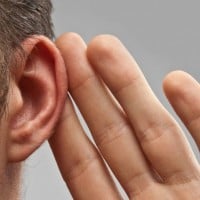Top Ten Human Senses
Science tells us that humans only have five senses---sight, smell, hearing, taste, and touch. But is this true? In fact, the claim that humans are limited to five senses is a myth. We actually have many more, and this list ranks them on their impact on how we live our lives and the interesting ways they operate.
Seeing is not necessarily vital to human living, but it definitely makes everything a lot easier. Touch can see texture hearing can see tone smell can see aroma taste can see flavor. Sight can see all of these things plus two more things that are very powerful---color and dimension.
I'd be okay with everything else taken away aside from my sight. I just need to be able to draw and I'm set for life.
I just wont be able to do much in case I get really hurt...and give up the pleasures of pizza...
Sight is probably my favorite sense because without it I can't read. I mean, I know that there are Braille books but I also write. I just love seeing words on pages.
Many people may not realize it, but touch is an extremely vital sense for humans to have. Imagine not being able to physically feel anything. It would be the most confusing and frustrating thing in the world. Touch actually helps our sense of sight because it helps our body to recognize and categorize object by how they feel.

Not many people actually pay attention to and understand how humans can actually hear things. I'm sure most people already know this, but for those who don't, sound is picked up by our ears as vibrations that our body processes using the ear canals, eardrums, the cochlea, and more. Hearing is a fascinating bodily operation and it would be hard to live without.
I listen to music all the time. If I ever went deaf, I would stab my self to death
Nociception is definitely an underrated sense like a lot of other senses on this list. To define this sense in one word---pain. Nociception is such an interesting sense because of the research done on it. Scientists and researchers used to believe that it was just a variation of touch however, it has since been discovered that it uses completely different sensory organs to operate.
I notice sadness in people especially their faces.
Balance. Everybody forgot about balance, otherwise known as equilibrioception. It is strange that equilibrioception was left out of the original five senses as it is so well-known and it is immensely different from any other sense that has been established. Balance gives us the ability to stand and walk around. In fact, without balance, we wouldn't even be able to tell what is up and what is down.
Proprioception is the sense of body awareness meaning it allows you to tell where your body parts are positioned in relation to the rest of your body. This sense that is very different from touch allows us to do complicated physical activities with our bodies, such as playing sports. If you have ever been drunk then you have probably experienced a loss of this sense as intoxication makes it harder for people to identify how their body is positioned.
Smell not only allows people to be comforted by a pleasant aroma, but it also helps other senses operate. I'm sure you have heard the statement that smell is a big part of taste. Smell can also maximize your sight by providing an insight into how things appear by their smell.
Taste is often looked at as an unimportant sense because one can still satisfy their hunger even though they can't taste the food they are eating. However, having everything you consume be completely taste is easier said then done. Good tastes and flavors provide nourishment and pleasure, and you would never be able to experience that without taste. It would make eating and drinking very frustrating.
This is probably the sense I'd be most willing to lose.
Welcome back, Kevie16!
Thermoception, the sense of how hot or cold it is, is a lot more useful than it appears to be. Many people might think that living without thermoception might make life easier because it would always be temperate however, having no thermoception would make it impossible to live safely and healthily. Extreme temperatures don't just make you uncomfortably warm or cold they can also drastically affect your internal and external health.
Temporal Perception is a human's perception of time without actually having to look at a clock. Everybody is familiar with the phenomenon that when you're having fun, time goes by quickly, but when you're bored, time goes by a lot slower. This is your temporal perception working.